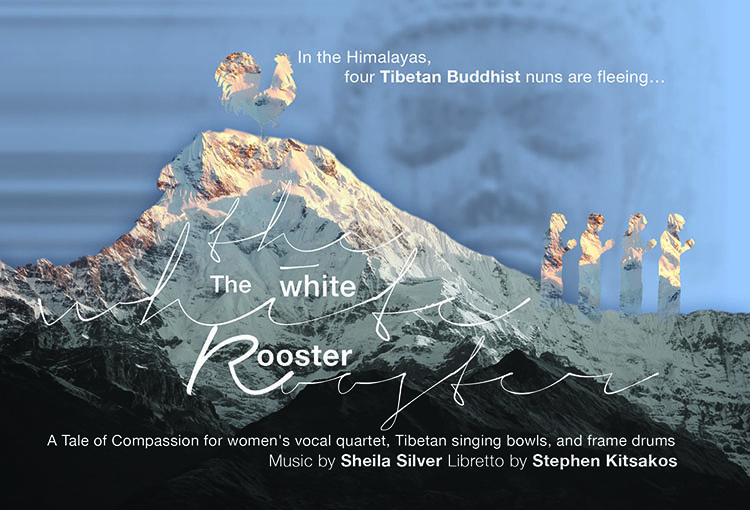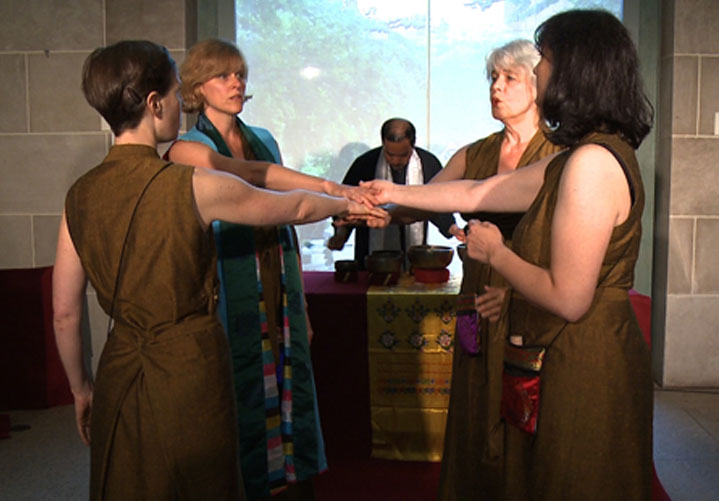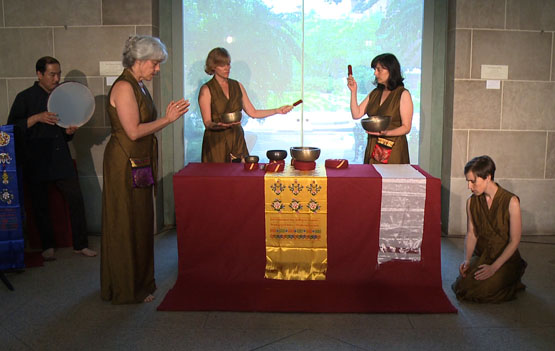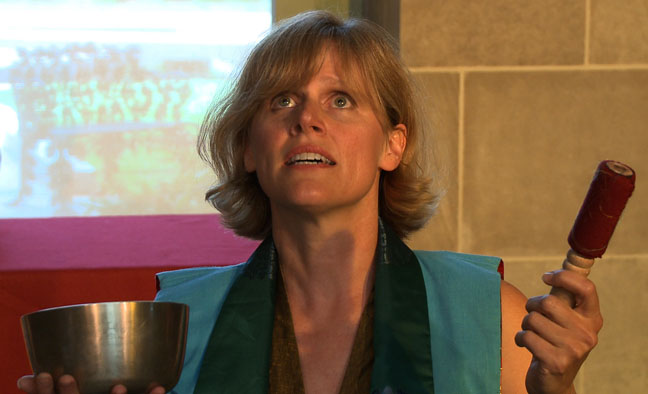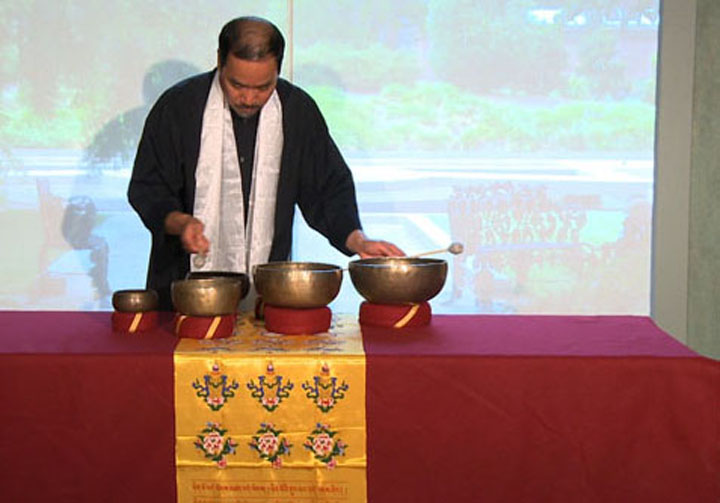“The tour de force of the afternoon was a 35-minute operatic cantata, “The Tale of the White Rooster,” by Sheila Silver…The music was fascinating, using Tibetan chants, modern harmonies and interweaving original melodies with much variety.”
Priscilla McClean, Albany Times Union
The White Rooster is a postmodern musical interpretation of a mythic Tibetan folk story placed within a contemporary setting in the tradition of a “play within a play.” It may be semi or fully staged. Conceived for the four female voices of Tapestry, traditional Tibetan melodies are used along with chant, ensemble singing, recitative, aria, and spoken dialogue. The work’s sole instrumentation is provided by six Tibetan singing bowls performed, for the most part, by the women, while various ethnic hand drums are played by a percussionist. The piece is designed to be performed in any theater or non-theatre venue/found space.
The work was commissioned by the Smithsonian’s Freer Sackler Gallery for their 2010 exhibit, In the Realm of the Buddha, which included works by the 17th century Tibetan monk, patron, and painter, Situ Panchen, as well as The Tibetan Shrine from the Alice S. Kandell Collection. The cantata was premiered in July 2010 and is currently being toured internationally by TAPESTRY.
The cantata incorporates 5 Tibetan mantras:
- Teyata Om Bekanze Bekanze Maha Bekanze Ranze Samungate Soha – a traditional healing mantra.
- Namo Buddahya, Namo Dharmaya, Namo Sanghaya – calling on Buddha, Dharma, and Sangha for support (composed to an original melody by Sabchu Rinpoche.)
- Om Tare Tutare Ture Soha – calls on Mother Tara (or Green Tara) to release one from fear and suffering.
- Om A Hung Benza Guru Pema Siddhi Hung – the Vajra Guru Mantra associated with Padmasambhava (based, in part, on a traditional melody).
- Om Mane Peme Hung – traditional Tibetan mantra invoking the power and benevolence of Chenrezig, the embodiment of compassion (based, in part, on a traditional melody).
The score bears the following dedication:
The White Rooster is dedicated to the memory of my sister, Susan Silver, who maintained her dignity, compassion, and empathy for others, in spite of the demons who plagued her throughout her life.
I would like to extend a special thanks to Sabchu Rinpoche, not only for his insights and explanations of Buddhist philosophy which were invaluable in shaping the libretto, but for his beautiful chanting and singing which inspired the settings of many of the mantras. OM MANI PEME HUNG and OM A HUNG BENZA GURU PEMMA SIDDHI HUNG are based, in part, on traditional Tibetan melodies. NAMO BUDDHAYA is based on an original melody composed by Sabchu Rinpoche.
DOWNLOADABLE PDF OF LIBRETTO: THE WHITE ROOSTER-libretto 2011

